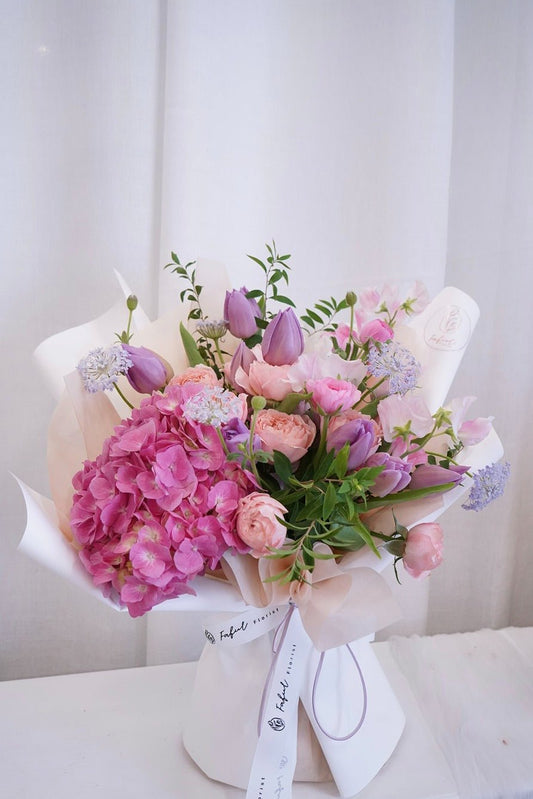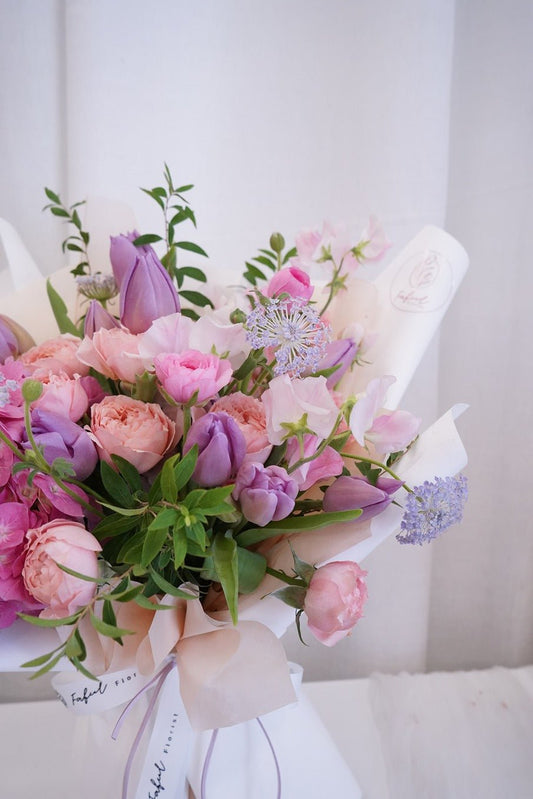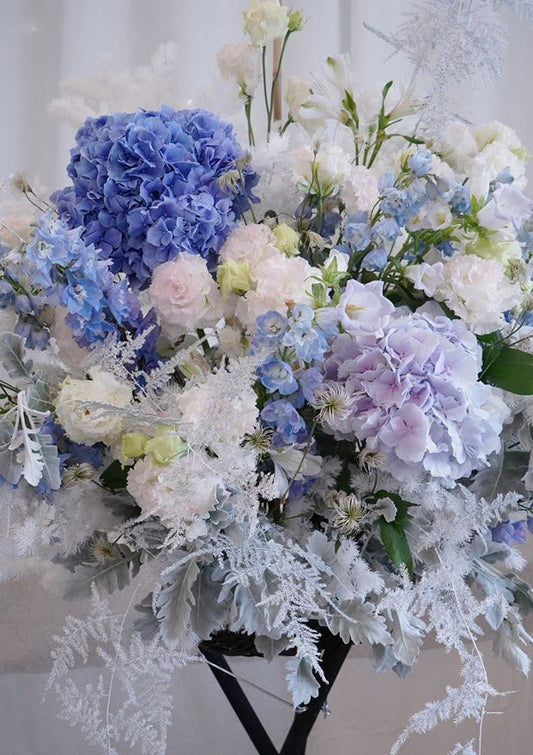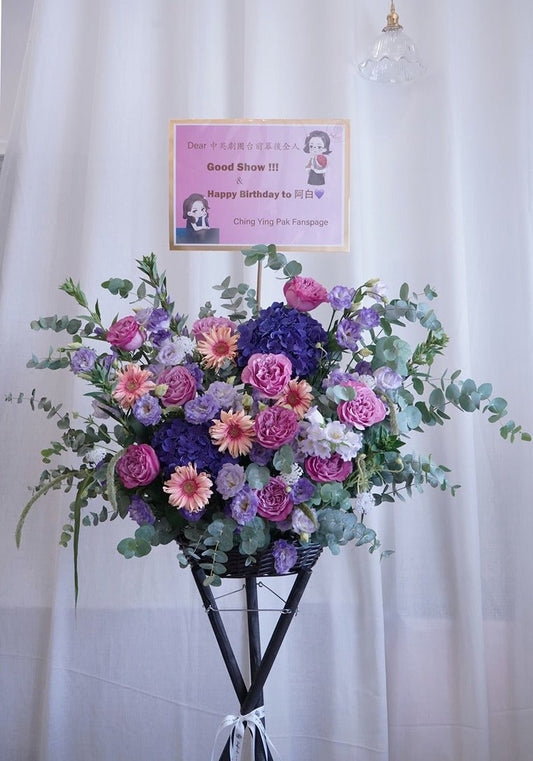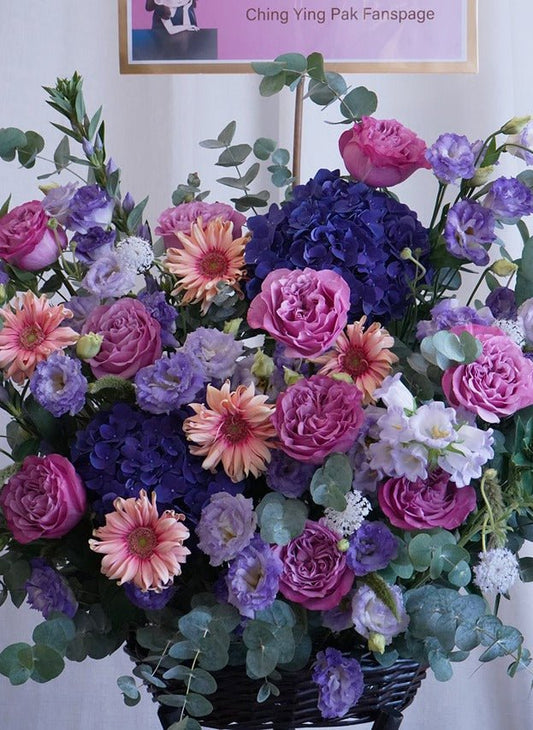Collection: Hydrangea Bouquet
Faful Florist Hydrangea Bouquets: Voluminous Clouds of Color
The Hydrangea Bouquet creates a stunning visual impact with its spherical cluster of hundreds of tiny flowers. Symbolizing "Unity," "Reunion," and "Hope," it is a true showstopper. Unlike standard blooms, we select Imported Dutch Hydrangeas known for their massive flower heads and saturated colors. Whether in dreamy blue-purple or sweet pink, a single stem creates a full, cloud-like romantic atmosphere.
[ + ] Explore Hydrangea Shades & Mixes
Hydrangeas offer a rich palette, each setting a different mood:
-
Dreamy Blue & Purple:
The most classic and popular shade. From fresh sky blue to mysterious violet, these Hydrangea Bouquets carry a cool, fairy-like vibe, perfect for summer gifts or expressing calm affection.
-
Vintage Antique / Autumn:
Featuring Hydrangeas with green edges or vintage red tones. These blooms have a thicker texture and can often be dried, making them the top choice for art lovers and unique tastes.
-
Voluminous Mix:
Using the massive volume of Hydrangeas as a base to support Roses or Tulips. The Hydrangea fills the bouquet perfectly, making the overall design look incredibly luxurious and grand.
[ + ] Hydrangea Care Guide: Prevent Wilting
Q: Why do Hydrangeas droop easily? (SOS Tip)
A: The name "Hydrangea" comes from "Water Vessel." They love water! If petals feel soft, they are dehydrated.
Rescue Tip: Submerge the entire flower head in water for 30 minutes, or spray water generously directly onto the petals (unlike roses, Hydrangeas drink through petals), and they will often revive quickly.
Q: What is special about Dutch Hydrangeas?
A: Compared to local varieties, Dutch Imported Hydrangeas have significantly larger heads, purer colors, and sturdier petals, resulting in a much longer vase life.
Q: What occasions are they best for?
A: Due to their round shape, they symbolize "Reunion" and "Harmony." They also represent "Hope," making them excellent for get-well gifts or celebrating new beginnings.






